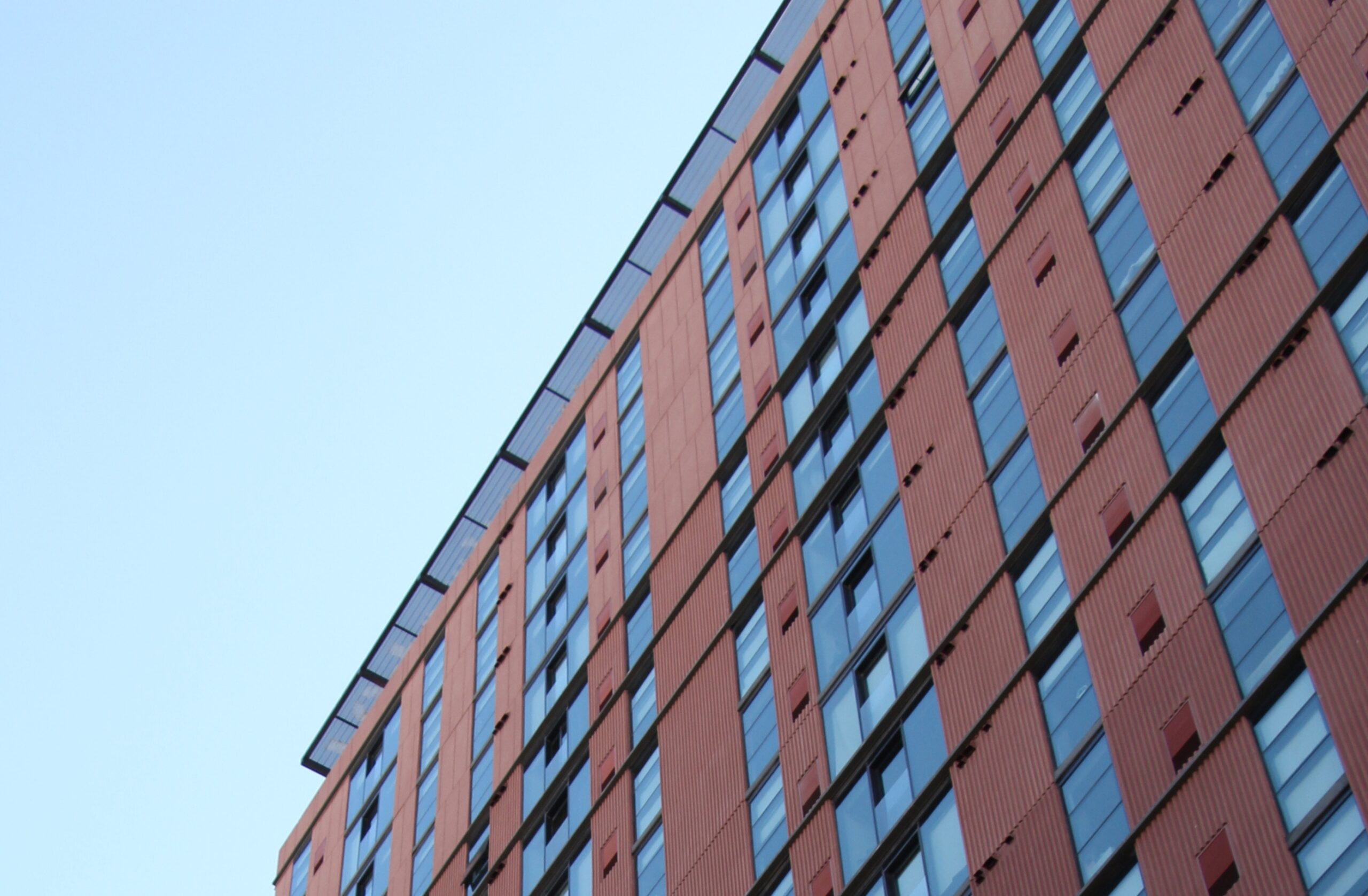Introduction
Managing the HVAC systems in large residential complexes can be challenging. With numerous units and shared spaces, problems can arise that impact the comfort and well-being of all residents. An effective HVAC system is key to maintaining a comfortable living environment, but several common issues can disrupt its performance. Identifying and addressing these problems promptly can help ensure that residents enjoy consistent temperatures, clean air, and lower energy costs.
One frequent issue in large residential complexes is inconsistent temperature and comfort levels. This problem can stem from various factors, such as poor system design or incorrect settings. Uneven heating and cooling can lead to uncomfortable living conditions, making some areas too hot while others remain too cold. Addressing this problem is crucial for maintaining resident satisfaction and reducing complaints.
Another significant issue is poor indoor air quality. Contaminants like dust, pollen, and mold can circulate through the ventilation system, contributing to health problems and discomfort for residents. Proper maintenance and air quality solutions are essential in mitigating these risks. By understanding and tackling these common HVAC issues, property managers can enhance the overall living experience in large residential complexes, ensuring a healthier and more comfortable environment for everyone.
Inconsistent Temperature and Comfort Levels
In high-rise buildings, inconsistent temperature and comfort levels are common issues that can lead to occupant dissatisfaction. Tall buildings experience different environmental conditions at various heights, creating challenges for HVAC systems to maintain a uniform temperature. Other factors such as poor insulation, inefficient zoning, and outdated HVAC equipment can exacerbate these issues.
A well-designed HVAC system addresses these problems by incorporating advanced zoning techniques and modern technologies. Zoning divides the building into sections that can be independently controlled, ensuring each area receives the appropriate heating or cooling based on its specific needs. This helps balance temperature disparities between floors and areas with different usage patterns.
Upgrading to modern HVAC systems like Variable Refrigerant Flow (VRF) systems can also significantly improve temperature consistency. VRF systems allow for precise control of heating and cooling, adjusting to the demands of individual zones. Implementing smart thermostats and building management systems further enhances control, enabling real-time adjustments to maintain optimal comfort levels throughout the building.
Poor Indoor Air Quality
Common Causes
Poor indoor air quality (IAQ) in high-rise buildings can result from several factors, including inadequate ventilation, the presence of indoor pollutants, and inconsistent maintenance of HVAC systems. High-rise structures often have limited natural ventilation, relying heavily on mechanical systems to circulate air. If these systems are not properly designed or maintained, they may fail to provide adequate fresh air, leading to stale and polluted indoor environments.
Another common cause is the presence of indoor pollutants such as dust, mold, volatile organic compounds (VOCs), and off-gassing from building materials and furnishings. These pollutants can accumulate over time if not effectively managed. Additionally, high-rise buildings with multiple tenants may have varied sources of pollution, making it challenging to maintain good IAQ.
Effective Solutions
To improve indoor air quality, several effective solutions can be implemented. Firstly, ensuring that the HVAC system is designed to provide adequate ventilation is crucial. This includes using advanced ventilation strategies like energy recovery ventilation (ERV) systems, which help maintain fresh air while recovering energy from exhaust air. Regular maintenance and cleaning of HVAC components, such as filters and ducts, are essential to prevent the buildup of dust and contaminants.
Installing high-efficiency air filters can also significantly improve IAQ by capturing fine particles and allergens. Monitoring indoor air quality with sensors allows for real-time detection of pollutants and timely intervention. Implementing green building practices, such as using low-VOC materials and increasing natural ventilation, can further enhance IAQ.
In summary, addressing poor indoor air quality involves a combination of proper HVAC design, regular maintenance, and the use of advanced filtration systems. These measures help create a healthier and more comfortable environment for occupants, reducing health risks and increasing overall satisfaction.
High Energy Consumption and Costs
Identifying Energy Drains
High energy consumption in multi-occupant buildings often results from inefficient HVAC systems. Identifying energy drains involves looking at several factors, such as outdated equipment, poor system design, and inadequate maintenance. Older HVAC units typically require more energy to operate and may not meet current efficiency standards. Additionally, poorly designed systems can lead to energy waste by overcooling or overheating certain areas.
Another common energy drain is the lack of proper insulation in high-rise buildings. Inadequate insulation allows for heat loss during the winter and heat gain during the summer, forcing the HVAC system to work harder. Furthermore, leaking ducts and windows result in significant energy loss, as conditioned air escapes and unconditioned air enters the building. Identifying these energy drains is the first step in reducing consumption and cutting costs.
Energy-Saving Measures
Implementing energy-saving measures can lead to significant reductions in energy consumption and operating costs. Upgrading to high-efficiency HVAC systems, such as those with variable speed drives and advanced controls, can make a substantial difference. These systems adjust their output based on current demand, ensuring that energy is used more efficiently. Installing programmable thermostats and building automation systems allows for optimal temperature control, reducing unnecessary energy use.
Improving insulation and sealing leaks in ducts and windows are also effective ways to save energy. Proper insulation keeps the building’s internal temperature stable, reducing the need for excessive heating or cooling. Regular maintenance, such as cleaning and replacing air filters, ensures that the HVAC system operates at peak efficiency. Implementing these energy-saving measures not only lowers costs but also contributes to a more sustainable building.
Frequent System Breakdowns and Maintenance Issues
Common Breakdown Causes
Frequent HVAC system breakdowns are often caused by a combination of factors, including poor maintenance, aging equipment, and inadequate system design. Neglecting regular maintenance tasks like cleaning coils, replacing filters, and checking refrigerant levels can lead to system malfunctions. Over time, these small issues can accumulate, resulting in major breakdowns that require costly repairs.
Aging equipment is another significant cause of breakdowns. As HVAC systems age, their efficiency and reliability decrease. Components wear out, leading to frequent issues and failures. Furthermore, outdated systems may not be designed to handle the demands of modern high-rise buildings, leading to frequent malfunctions under heavy use.
Improper system design can also contribute to frequent breakdowns. If the HVAC system is not adequately sized for the building or lacks proper zoning, it may struggle to maintain consistent temperatures, causing increased wear and tear.
Preventative Maintenance Tips
Preventative maintenance is key to extending the lifespan of HVAC systems and minimizing breakdowns. Regularly scheduled maintenance tasks include cleaning and inspecting all system components, checking electrical connections, and ensuring proper refrigerant levels. Changing air filters every few months helps maintain system efficiency and prevents dust and debris from causing blockages.
Scheduling annual professional inspections allows for early detection of potential issues before they become major problems. Professionals can identify and fix minor issues, such as worn-out parts or small leaks, that may lead to significant breakdowns if left unaddressed. Additionally, upgrading components like thermostats and controls to modern, efficient versions can improve overall system reliability.
By following these preventative maintenance tips, building owners can reduce the frequency of HVAC system breakdowns, ensuring a more consistent and comfortable environment for occupants.
Conclusion
Ensuring comfort and efficiency in multi-occupant buildings requires a well-designed and properly maintained HVAC system. Addressing common issues such as inconsistent temperature, poor indoor air quality, high energy consumption, and frequent system breakdowns are essential steps in achieving this goal. By implementing advanced technologies, regular maintenance, and energy-saving measures, we can create healthier, more comfortable, and cost-effective indoor environments.
A proactive approach to HVAC design and maintenance not only improves occupant satisfaction but also contributes to sustainability and lower operating costs. Investing in high-efficiency systems and regular upkeep ensures that buildings operate at their best, providing a pleasant environment for all.
At First Co., we are committed to delivering innovative HVAC solutions for multi-occupant buildings. Contact us today to learn how our HVAC experts can help optimize your HVAC systems, enhancing comfort and efficiency in your high-rise buildings.


